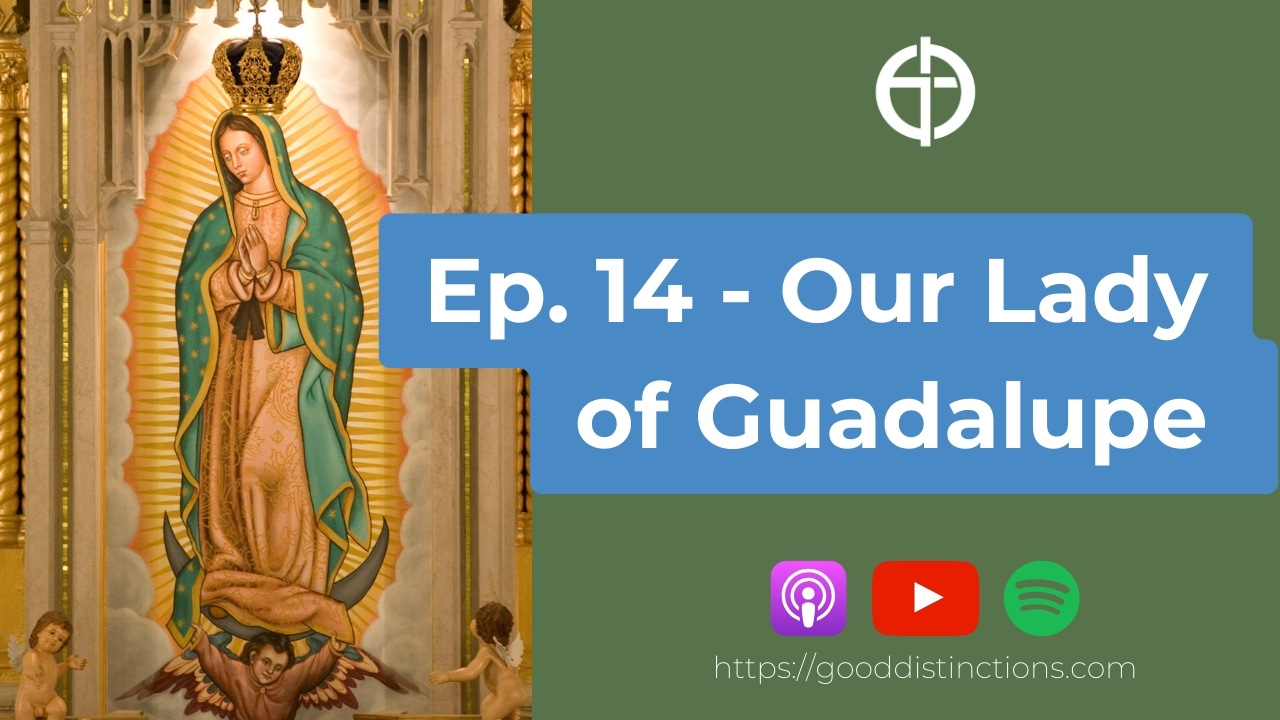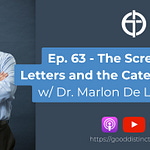(Our Lady of Guadalupe - December 12)
La Nuestra Señora de Guadalupe: Patroness of the Americas
You are definitely going to want to read this post all the way to the end.
What a crazy ride!
In 1946, Pope Pius XII declared Our Lady of Guadalupe to be the Patroness of the Americas. In 1961, Pope St. John XXIII prayed to Our Lady as the Mother of the Americas, calling her the Mother and Teacher of the Faith to the peoples of the Americas.
In 1979, shortly after the dedication of the new Basilica of Our Lady of Guadalupe, four miles from Mexico City, Pope St. John Paul II celebrated Holy Mass in the sanctuary. This was his first international pilgrimage. In 1990, the Pope returned to the Basilica to preside over the beatification ceremony of Juan Diego. Then, he returned to Mexico City in 2002 to preside over the canonization of St. Juan Diego of Cuauhtlatoatzin (Feast Day: December 9)
St. Juan Diego of Cuauhtlatoatzin
St. Juan Diego was born in 1474 in what is now Mexico City, Mexico. At the time, Columbus had not yet set sail on his first voyage from Portugal. Juan, also called “Talking Eagle,” was a member of the Chichimeca people. There are a LOT of sources, including Britannica, that refer to Juan Diego as an “Aztec.” To be clear: he was not. His people were not the rulers of Tenochtitlan, nor did they practice human sacrifice, as the “Aztecs” did. Why do I keep putting “Aztec” in quotes? It is because the term “Aztec” was first used three hundred years later by the German explorer Alexander von Humboldt. I suppose, in an anachronistic way, we could call St. Juan Diego an “Aztec,” but he was certainly not a member of the Mexica tribe that were the dominant ethnic group in the Triple Alliance. As a Nahua, Juan Diego did share cultural and linguistic affiliations with the Mexica, but the Chichimeca had a varied history with the Mexica.
Anyway… the Vatican accounts what happened next!
When he was 50 years old he was baptized by a Franciscan priest, Fr Peter da Gand, one of the first Franciscan missionaries. On 9 December 1531, when Juan Diego was on his way to morning Mass, the Blessed Mother appeared to him on Tepeyac Hill, the outskirts of what is now Mexico City. She asked him to go to the Bishop and to request in her name that a shrine be built at Tepeyac, where she promised to pour out her grace upon those who invoked her. The Bishop, who did not believe Juan Diego, asked for a sign to prove that the apparition was true. On 12 December, Juan Diego returned to Tepeyac. Here, the Blessed Mother told him to climb the hill and to pick the flowers that he would find in bloom. He obeyed, and although it was winter time, he found roses flowering. He gathered the flowers and took them to Our Lady who carefully placed them in his mantle and told him to take them to the Bishop as "proof". When he opened his mantle, the flowers fell on the ground and there remained impressed, in place of the flowers, an image of the Blessed Mother, the apparition at Tepeyac.
With the Bishop's permission, Juan Diego lived the rest of his life as a hermit in a small hut near the chapel where the miraculous image was placed for veneration. Here he cared for the church and the first pilgrims who came to pray to the Mother of Jesus. (Vatican.va)
The Image of Our Lady
The miraculous image that appeared on the tilma of St. Juan Diego is absolutely incredible and we continue to learn new things about it. First, a description is worthwhile. The Vatican describes it thusly:
The miraculous image, which is preserved in the Basilica of Our Lady of Guadalupe, shows a woman with native features and dress. She is supported by an angel whose wings are reminiscent of one of the major gods of the traditional religion of that area. The moon is beneath her feet and her blue mantle is covered with gold stars. The black girdle about her waist signifies that she is pregnant. Thus, the image graphically depicts the fact that Christ is to be "born" again among the peoples of the New World, and is a message as relevant to the "New World" today as it was during the lifetime of Juan Diego. (Vatican.va)
Our Lady of Guadalupe and the Battle of Lepanto
There are significant miracles associated with Our Lady of Guadalupe. In 1571, Admiral Doria carried a copy of the image aboard his ship during the Battle of Lepanto. He said that it was the Virgin of Guadalupe’s intercession which carried them to victory over the fleet of the Ottoman Turks, though they were outmanned and outgunned.
Good Distinctions is a reader-supported publication. To receive new posts and support my work, consider becoming a free or paid subscriber.
Subscribed
17th - 19th Centuries
In 1647, the image was covered with glass for the first time. In 1648, Luis Lasso de la Vega published a telling of the story of St. Juan Diego and the Virgin of Guadalupe in the Nahuatl language. Our Lady continued to convert the peoples of the Americas.
In 1667, Pope Clement IX instituted the feast of Our Lady of Guadalupe on December 12, the date it is still observed.
In 1746, Our Lady of Guadalupe was made the patroness of all of New Spain, which at the time reached from northern California to El Salvador. This patronage was fully approved by Pope Benedict XIV in 1754 and he granted a Mass and Office proper to the December 12 feast.
Bombing of the Image!
On November 14, 1921, a bomb was placed beneath the image of the tilma! The bomb caused a lot of damage to the basilica, but despite going off just below the image did not do any damage to it!
The Eyes of the Virgin
A photographer, Alfonso Marcue, in 1929, made the discovery of the reflection of a man’s head in the right eye of the Virgin Mary in the image on the tilma. This was further confirmed by the investigations of a man named Carlos Salinas in 1951. Dr. Javier Torroella Bueno, an opthalmologist, also examined the eyes of the Virgin on the tilma and said that he too confirmed the reflections of human beings in the eyes.
In 1958, Dr. Rafael Torija Lavoignet publishes a study of the Purkinje-Sanson effect which states that the reflection of images are inverted in the inner surface of the eyes’ lens. This effect is present in the image of Guadalupe.
Using modern techniques and magnification, in 1962, Dr. Charles Wahlig, O.D. discovered two images reflected in the eyes of the Virgin when studying a 25x enlarged photograph. In 1979, engineer Dr. Jose Aste Tönsmann found that at least four human figures are reflected in both eyes - including an image of a man who appears to be Bishop Zumarraga.
The Tilma Itself
The eyes of the Virgin in the tilma are spectacularly miraculous, but check this out…
For 115 years, the tilma was displayed without protective glass. This means it was exposed to soot, candle wax, people touching it, and incense used nearby. And despite a bomb going off underneath it… the material of the tilma has maintained chemical and structural integrity for almost 500 years! The same composition used for these sorts of tilmas normally only lasted for fifteen years, not five hundred.
The moon under the Virgin’s feet, the angel holding the cloth, and rays coming from the image were are painted cloth that have been added over the years. But the original image of the Virgin herself was not painted. There is no sketch underneath it, no brush strokes, and it seems to have been produced in a single step. Dr. Philip Serna Callahan, a NASA consultant and biophysicist at the University of Florida made these discoveries as he studied the tilma under infrared radiation. That paper from 1981 can be found here.
Our Lady Loves Her Children
La Nuestra Señora de Guadalupe is the mother of us all. She is the Mother of Jesus. But she is also Mother to all the children entrusted to her care, whether native American, Spaniard, or otherwise.
Pope Benedict XVI reminded listeners in Brazil in 2007 of the words recorded to have been said to St. Juan Diego by our Blessed Mother. She said:
“Am I not your mother? Are you not under my shadow and my gaze? Am I not the source of your joy? Are you not sheltered underneath my mantle, under the embrace of my arms?” (Nican Mopohua, nos. 118-119).
Our Lady of Guadalupe, wrap us in your mantle of love. Hold us close and draw us nearer to your Blessed Son, our Lord Jesus Christ. Holy Mary, Mother of God, pray for us. Amen.












